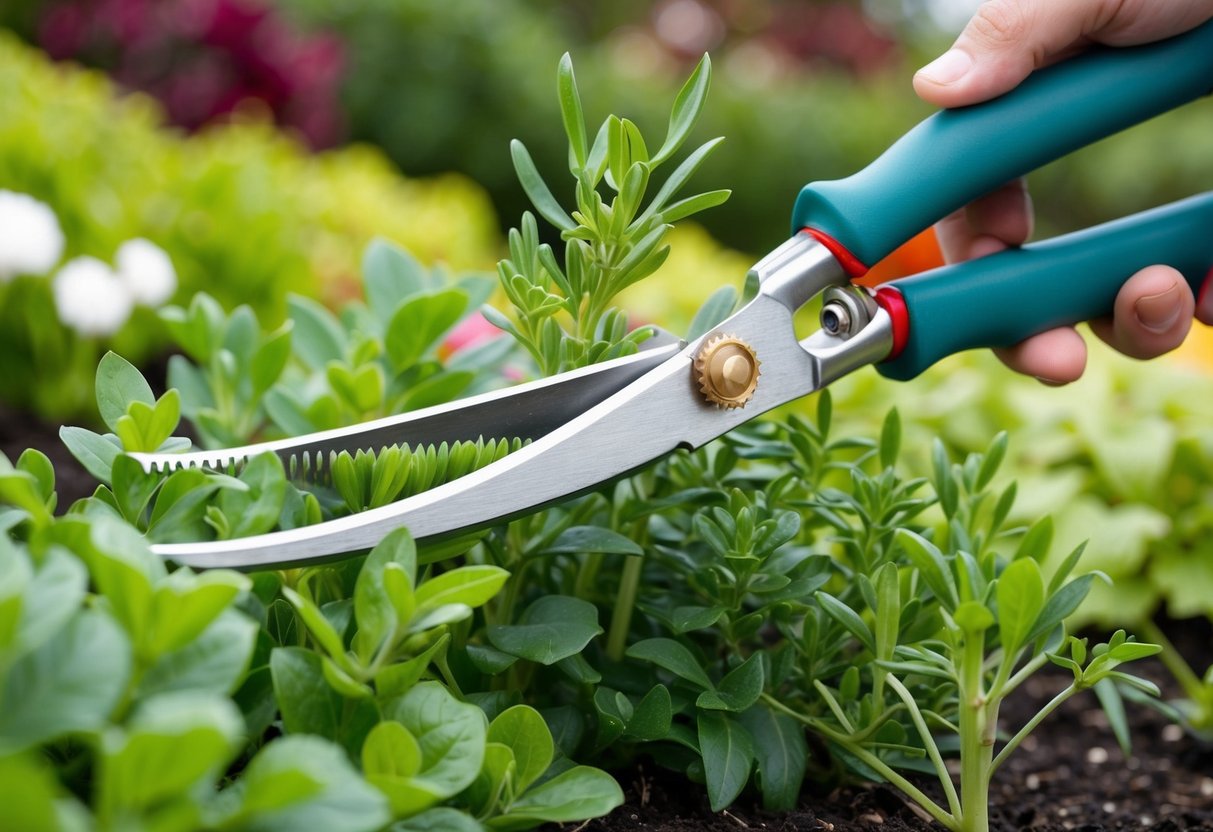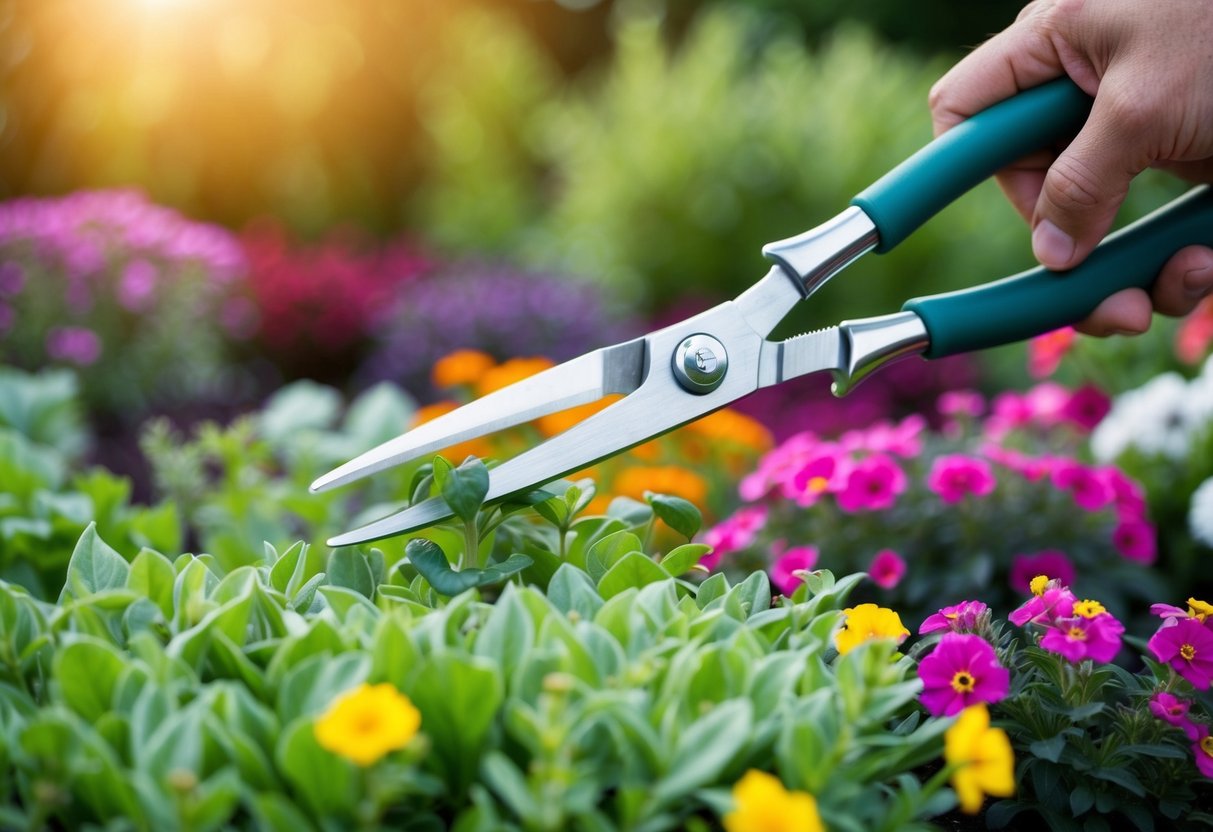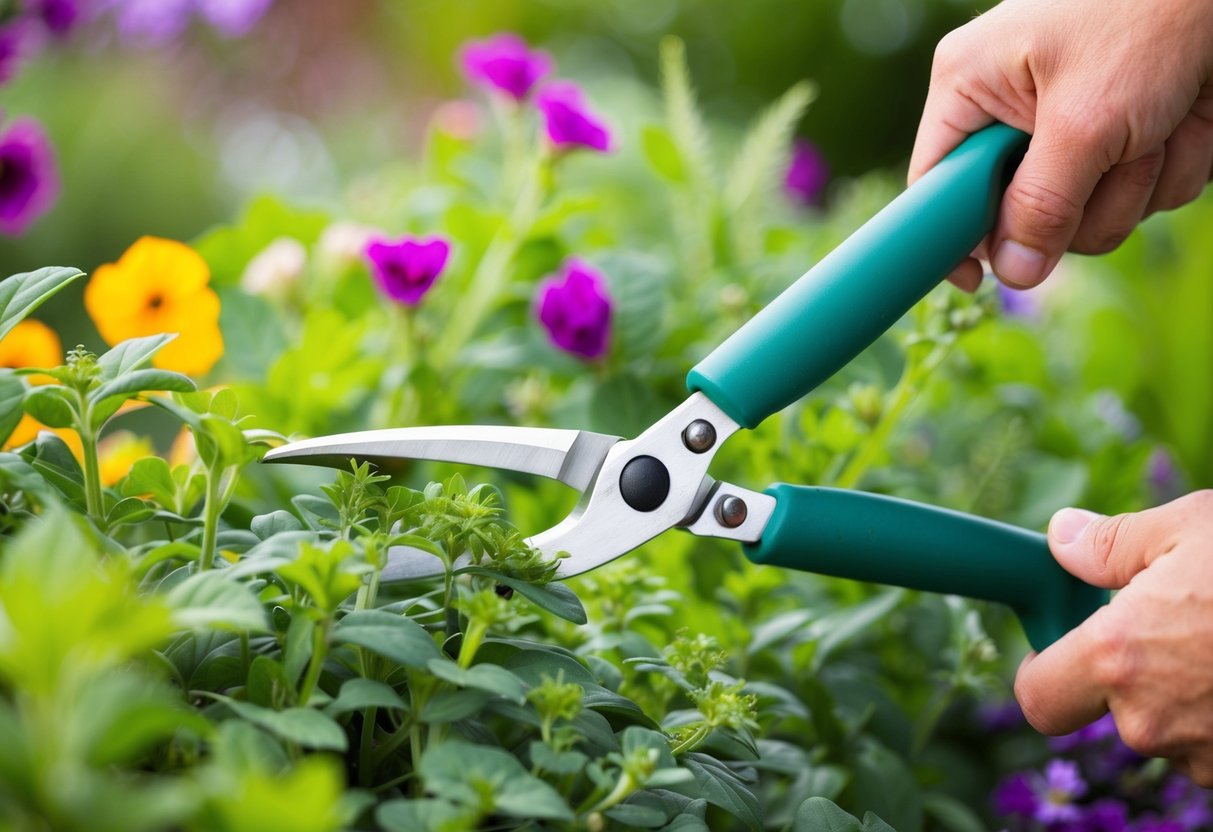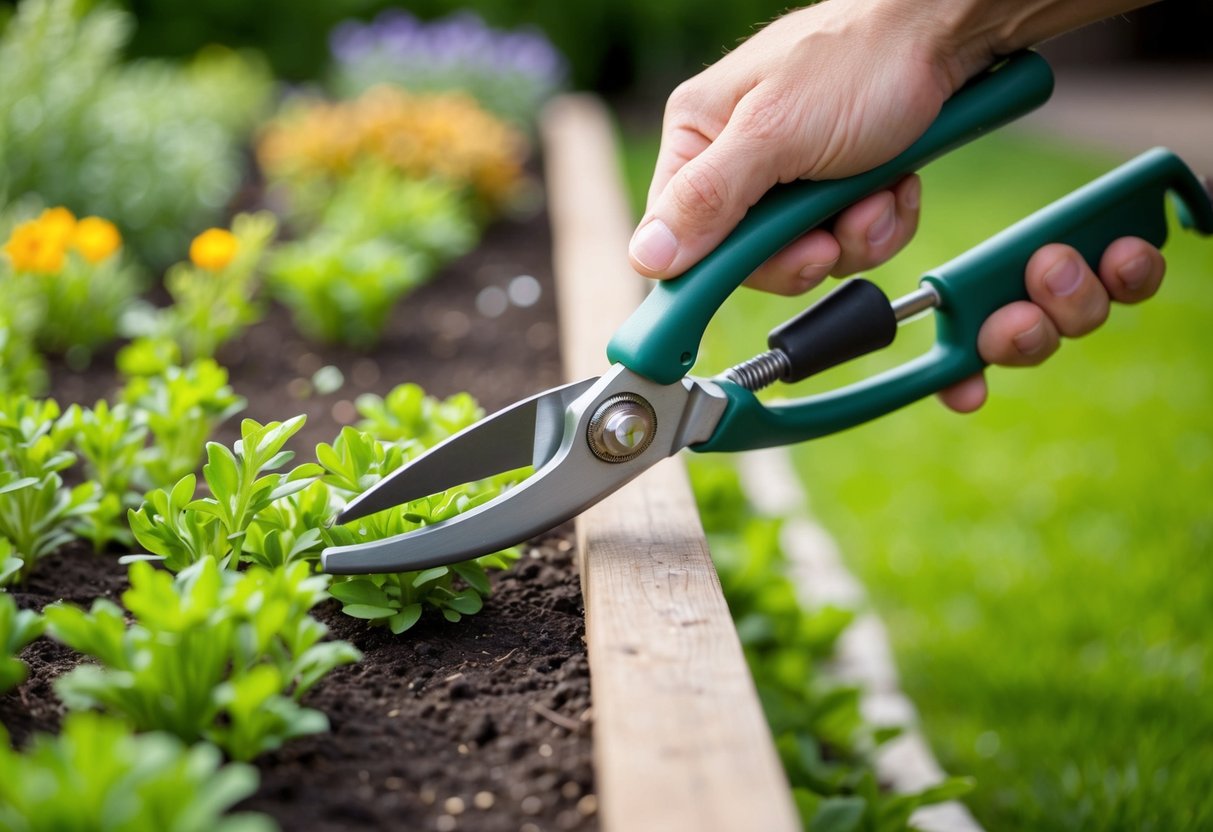Can You Cut Back Bedding Plants? Tips for Vigorous Growth
Wondering if you can cut back your bedding plants? Yes, you can cut them back to promote healthy growth and ensure they look their best throughout the growing season. Pruning is a key part of plant care that can transform your garden beds by encouraging plants to produce more blooms and maintain their shape.

You might feel uncertain about the right time to do this. For many spring-blooming bedding plants like pansies or tulips, consider trimming them in early summer. If you have summer bloomers such as marigolds or petunias, the best time to cut them back is in early spring. Trimming these plants not only helps them stay healthy but also prevents them from becoming leggy and unproductive.
Pruning doesn’t have to be tricky. It’s as simple as cutting back to the nearest set of healthy leaves. If your bedding plants start looking a bit wild, you can guide them back into shape with your garden shears. Once you get the hang of it, you’ll see how this simple task can lead to a more vibrant and lively garden.
Understanding Pruning

Pruning is an important practice for maintaining healthy bedding plants. By carefully trimming your plants, you can encourage new growth and improve the overall appearance of your garden.
Benefits of Pruning Bedding Plants
Pruning helps your bedding plants thrive by encouraging healthier growth and more blooms. Removing dead or faded flowers, a technique known as deadheading, prevents the plant from wasting energy on seeds. This energy is redirected to producing more flowers and vibrant foliage.
Pruning also keeps plants from becoming too crowded. By thinning out some branches or leaves, air circulates better, reducing the risk of disease. Overall, this makes your plants stronger and more resilient throughout the growing season.
Pruning can also lead to rejuvenation. Cutting back old stems allows fresh growth to come through, keeping the plant looking lively. It’s a simple yet effective way to maintain a colorful and flourishing garden space.
Different Pruning Techniques
Several techniques are useful for maintaining bedding plants. One common method is pinching. This involves removing the tip of the plant, encouraging a bushier growth. Pinching is helpful for plants like petunias and marigolds.
Another technique is trimming or cutting back plants after they bloom. For example, cutting down spring-blooming plants like tulips in early summer can promote fresh blooms.
Deadheading, as mentioned earlier, involves removing spent flowers. This keeps your plants looking neat and encourages continued flowering. Using sharp tools like pruning shears ensures clean cuts, reducing the risk of damaging your plants.
When to Prune

Knowing when to prune your bedding plants helps keep them healthy and beautiful. The timing depends on the season, which affects the plant’s growth and blooming period. Following a pruning schedule improves the overall well-being of your plants.
Spring Pruning Schedule
Spring is a great time to remove dead or damaged growth. During this time, you can promote new shoots by trimming any parts affected by winter. Not all plants need pruning in spring, so focus on those that are overgrown or unhealthy.
Take care when pruning spring-flowering plants. Do it after they bloom to avoid removing future buds. For detailed guidance on specific types, explore resources on spring pruning.
A little attention in spring helps your plants thrive through the growing season, making them fuller and healthier.
Summer Pruning Tips
Summer is best for deadheading annuals and cutting back flowering perennials. This promotes further blooms and fuller growth. Be sure to water the plants well afterward, as summer heat can stress them.
Prune right after the first flush of flowers fades. This helps maintain shape and manage size. Some plants, like shrubs, may need careful thinning during the summer.
Remember, too much pruning in extreme heat can harm your plants. Light pruning is often the best approach during hotter months.
Fall Pruning Guide
In fall, focus on preparing your garden for winter. Cut back perennials and remove dead annuals. Trim perennials to about 3 inches above ground.
Avoid pruning in late fall when frost risk is high, as it can damage new growth. Instead, focus on cleaning up and shaping before this point.
Falling temperatures can signal the end of the growing season, so your work in the fall helps ensure plants are strong and ready for a fresh start in spring. Learn more about what to consider for fall plant care in resources like this fall pruning guide.
How to Prune

Pruning is essential for keeping your plants healthy and looking good. By trimming correctly, you can encourage more growth, manage overgrowth, and even make your plants bushier and fuller.
Pruning Perennials for Growth
Perennials often benefit from pruning in spring. This helps rejuvenate the plants by removing dead or damaged parts. Use sharp shears to cut off any dried or brown stems. When you prune perennials, be careful not to cut too much so you do not cause stress to the plant.
Trimming at the right time encourages better blooms and stronger stems. Focus on finding and removing unwanted branches to shape the plant well. This helps improve air circulation and light penetration, both of which are important for healthy growth.
Cutting Back Overgrown Plants
When a plant becomes too large or unruly, it may be time to cut it back. Overgrown plants can become weak and less productive. Use tools like pruning shears or scissors to make clean cuts, which prevents damage.
Trim the plant by cutting above the leaf buds to encourage new growth. Be sure not to cut too close to the main stem to avoid harm to the plant. This method helps control the size and shape, making it more manageable and promoting better health.
Trimming for Bushier Plants
If you want your plants to look fuller, trimming can help. By cutting back the tips of certain plants, you encourage them to grow more branches. This technique creates a denser and bushier appearance.
Identify suitable plants and lightly trim at nodes where leaves meet the stem. This stimulates side growth and makes the plant look lush. Regular trimming throughout the growing season can enhance the plant’s appearance. Avoid over-trimming to keep the plant stress-free and healthy.
Care for Specific Bedding Plants

When caring for bedding plants, focus on proper maintenance to encourage healthy growth and beautiful blooms. Different plant types require varying approaches. Understand how to handle flowering plants, ornamental grasses, and unique varieties for best results.
Managing Flowering Plants
When caring for flowering plants like petunias, geraniums, and asters, regular deadheading is crucial. This involves removing faded blossoms to promote continued blooming.
Pruning is especially important for plants like mums and lavender. Trim them back after flowering to maintain shape and encourage more robust growth.
Irrigation plays a key role in maintaining the health of these plants. Ensure they are watered evenly and avoid letting the soil dry out completely. Fertilizing your flowering plants with a balanced nutrient formula can also enhance their color and vigor.
Maintenance for Ornamental Grasses
Ornamental grasses, such as Russian sage and cardinal flower, provide texture and movement in the garden. In early spring, cut back grasses to about six inches to make way for new growth.
These grasses are drought-tolerant once established but benefit from regular watering during dry spells. Add mulch around the base to retain soil moisture and suppress weeds.
Ornamental grasses require minimal fertilization. A slow-release fertilizer in early spring will suffice to support their growth throughout the season.
Special Considerations for Unique Varieties
Unique varieties like butterfly bush and coneflower require special attention to thrive. These plants benefit from selective pruning to maintain shape and encourage vibrant blooms.
For perennials like potentilla and spirea, consider rejuvenation pruning. Cut back a third of the oldest stems to encourage new growth.
Pay attention to sunlight exposure and soil conditions. Butterfly bush prefers full sun, while spirea can tolerate partial shade. Adjust watering schedules based on weather, ensuring that the plants receive adequate hydration without becoming waterlogged.
Post-Pruning Care

Caring for your bedding plants after pruning is important for ensuring healthy regrowth and keeping your garden vibrant. You’ll want to focus on encouraging new growth, keeping pests and diseases at bay, and preparing your plants for the colder months.
Promoting Healthy Regrowth
After trimming your bedding plants, make sure they have the nutrients needed for healthy regrowth. Applying a balanced fertilizer can help replenish essential nutrients. Ensure your plants receive enough water, but avoid waterlogging by keeping the soil moist, not soggy. This helps roots absorb nutrients for optimal growth. Consider adding a layer of mulch to retain moisture and keep roots cool during warmer periods.
Protecting Against Diseases and Pests
Post-pruning, it’s crucial to keep diseases and pests away from your plants. Clean up any plant debris to reduce the risk of attracting insects or harboring disease spores. Monitor your plants regularly for
Overwintering Strategies for Bedding Plants
When preparing your bedding plants for winter, different strategies may be necessary based on the type of plant.
For many bedding plants, especially those that are perennial, consider mulching around the base to protect roots from frost.
For tender plants, you might need to bring them indoors or cover them with frost cloth when temperatures drop.
Ensuring your plants continue to have moist soil before the ground freezes can also help them survive the winter months.







